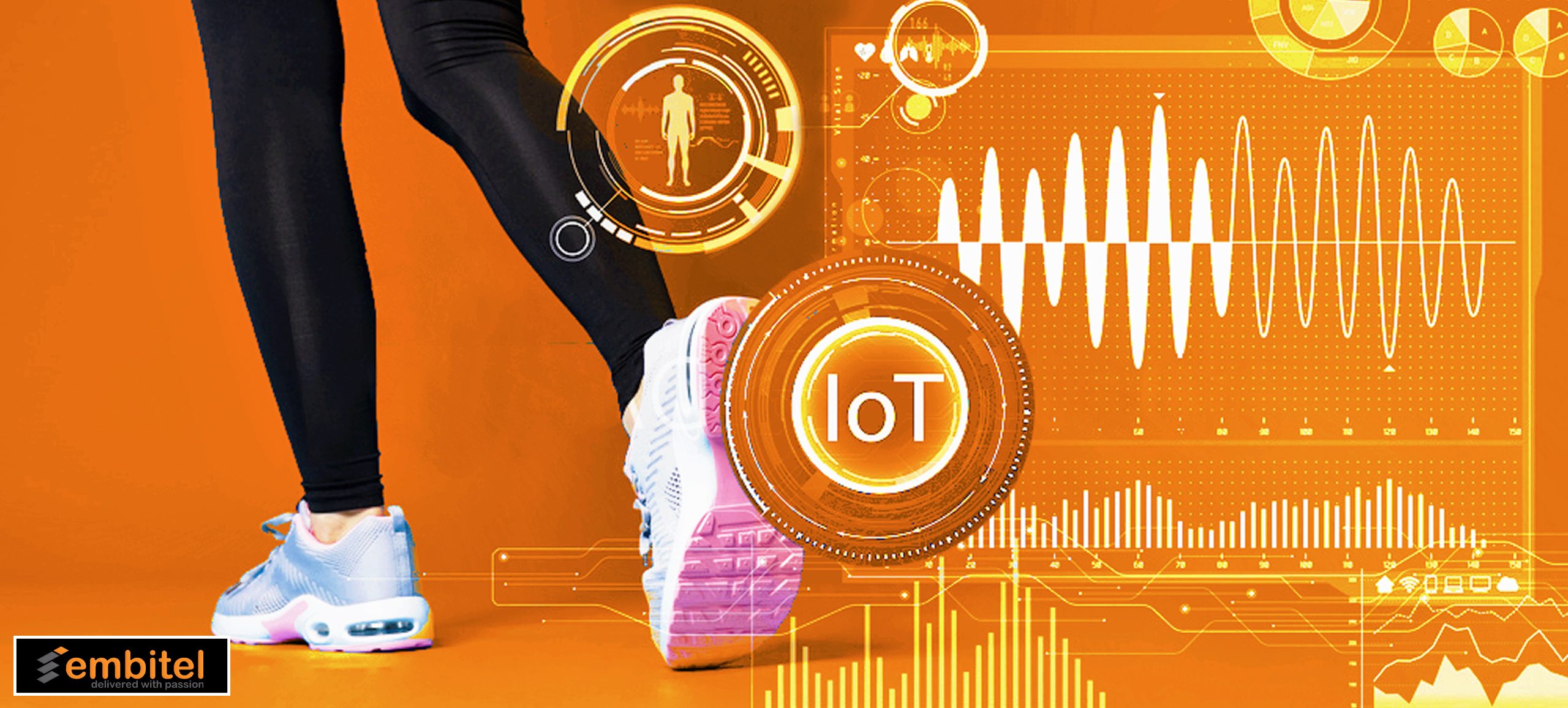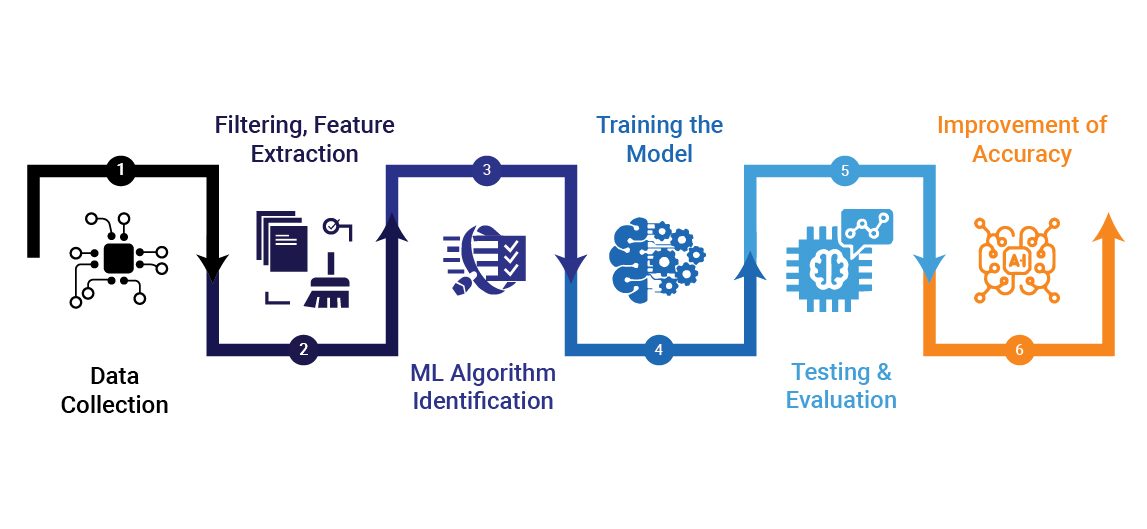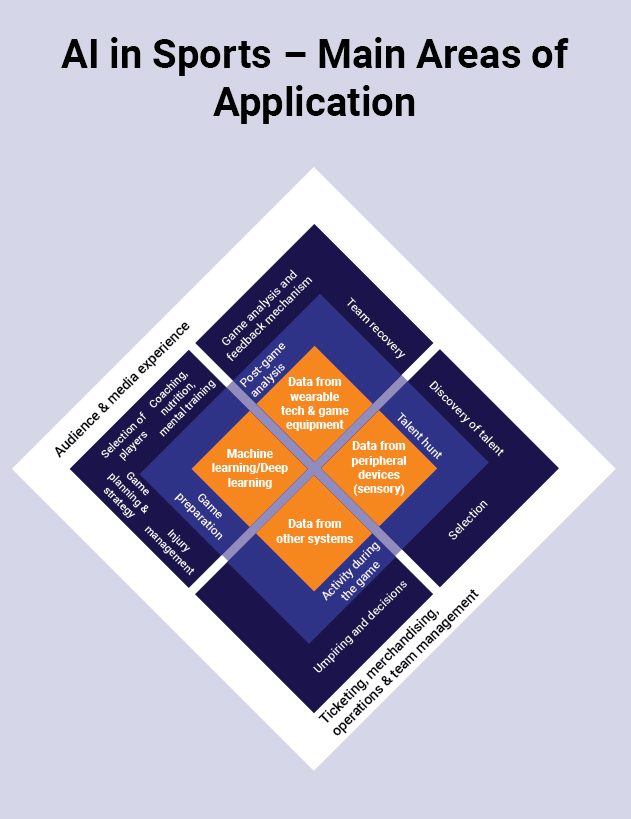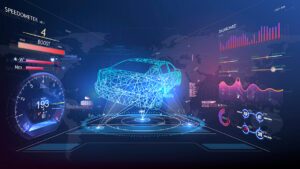In the last two decades, technological advancements have made their mark in the sports industry. With these advancements, coaches and teams have adopted improved training techniques to enhance player performances and reduce injuries.
One such improvement is the way in which Artificial Intelligence (AI) is being used in the sports industry. Today, professional sports organizations are viewing AI and Data Science as pivotal in gaining an upper hand over competition. In this article, we explore the tangible benefits of using machine learning in sports analytics.
AI in Sports – Where Does Machine Learning Come into the Picture?

One of the significant uses of Machine Learning (ML) in sports is in athlete training. With the integration of AI, performance analysis of athletes has become extremely sophisticated. When Data Science and analytics is integrated with sports, coaches can gain significant information about their players’ strengths and weaknesses. Data collected on the field can also provide interesting insights that help coaches to modify game strategy or unearth new tactics.
Let us explore this further with an example of how machine learning can revolutionize basketball training. Nowadays, basketball players training at top-level clubs use wearable technology (fitted with a sensor device) that records the player’s movements. The low-weight sensor is usually inserted into a flap on the player’s undershirt.
IMU (accelerometer, gyroscope and magnetometer) sensor collects the leaping height, running speed, and force/precision of the player’s movements, along with various other information. The data collected by these IoT powered sensors are then analyzed and fed into machine learning algorithms to determine some metrics.
Data Analytics Using Wearable Technology in a Basketball Game – Let’s Understand this Better
Phase 1 – Data collection using IMU sensor
Let’s consider that a basketball game has commenced, and the movement of players are tracked using wearable devices. For a specific player, the accelerometer will record the extent of their movement in the x, y and z axis and gyroscope will record angular movement. Such data is collected for multiple players across multiple games.
Phase 2 – Data cleaning, filtering and feature extraction
IMU sensor collects raw data. This raw data is not enough for ML algorithms to identify player activities. So, the Data Science Engineer identifies and computes relevant parameters (features) from raw data through data mining and preprocessing. The cleaned data is used for subsequent processes. These features help the algorithm to understand differences between player activities.
Data modeling is also performed to get a visual representation of the data and the interdependencies between data points.
Phase 3 – Evaluation and identification of the machine learning algorithm
Based on the problem statement and parameters, a suitable machine learning algorithm (neural networks, classification models, decision trees, regression models, etc.) is identified.
Phase 4 – Training the machine learning model
First the filtered data is segregated into ‘training data’ and ‘validation data’.
From the training data, the Data Science engineer identifies whether the player was dribbling, running, shooting or turning around and labels it accordingly. This labeled data is then fed to the machine learning algorithm for training.
In the training phase, the engineer tells the algorithm what type of action is being done for specific details of sensor data. The algorithm analyses all the players’ data and learns what kind of graph a dribble, jump, run, shoot, etc. entails.
For instance, the algorithm learns that dribbling parameters will vary between specific boundaries. And likewise, for run, shoot and jump. The next time we feed it with sensor data, it will be able to predict that the first 5 seconds of movement of a player was a run, the next 1 second is a jump, the following 2 seconds is dribbling , and so on. In case of errors in prediction, the engineer feeds the actual data to the model so that it learns better.
Phase 5 – Machine learning model prediction and analytics
After training the algorithm and validating its predictions, the engineer proceeds with the testing. The test data was never given to the algorithm while training, and it is completely fresh data. The engineer evaluates if the predictions with the test data are accurate. In case of errors at this stage, data cleaning and fine tuning of the algorithm is done again, to improve accuracy.
At the end of the testing cycle, the algorithm will be able to identify the type of action performed by the basketball player from the sensor data with a great level of accuracy. It is also possible to calculate the speed of the player while they walk, run and sprint. The engineer can then analyze these parameters for each player across multiple games to identify the progressive improvements in their game.

So, in a nutshell, the main approach here is supervised learning which involves feeding the ML algorithm/model with “answers” and corresponding “data” to a specific problem. The algorithm narrows down the rules and later uses these rules to make predictions. The predictions are then evaluated for accuracy over “unseen” data.
In the case of the aforementioned basketball game, the core part is in identifying activities and the duration of every activity in each game. Using these findings, a wide range of parameters are calculated and projected.
AI in Sports is Not Limited to Athlete Training
The advent of machine learning and AI in sports has opened up a plethora of opportunities and sports organizations are utilizing data to improve operations significantly. Let’s look at some of these AI use cases in sports:
- Player development – Through Data Science, sports organizations can measure the improvements in the performance and value of each player. Organizations can also provide quick feedback to players, so that they can chart out a phased performance improvement strategy.
- Player projection – AI in sports enables organizations to have an understanding of the future performance and risks borne by each player. This helps them to make more judicious decisions when signing contracts with players. Coaches are always focused on the condition of players when scheduling training sessions. With Data Science, they can calculate the probability of athlete injuries with higher accuracy. Player projection is essentially the foundation on which successful teams are built.
- Game strategy optimization – When teams are equipped with the data on the strengths and weaknesses of their teammates and opponents, they can optimize their performance and game strategy to ensure a win! For instance, if teams that win consistently employ a certain strategy or perform a specific activity better than others, targeted technical training can be given to players to improve those skills. Data mining can be used on data collected from competitors to understand their key to success.
- Improved decision making – Overhead cameras are not uncommon on football fields these days. Such cameras ensure that goals are not incorrectly given/denied. We often see on-field tracking systems in tennis courts as well, to detect line calls and assist in judging more accurately. Computer Vision is a technology that is being deployed across various sports to reduce mistakes and avoid poor refereeing decisions. Overall, sports is now increasingly embracing AI to improve the on-field decision-making process.
- Ticket pricing – The application of AI in sports is not limited to the player development, projection, game strategy and decision-making use cases described above. Off-the-field business of sports can gain immensely by moving towards a data driven culture. Organizations can collect data on ticket pricing, price variations and sales across various sites. They can then optimize the pricing strategy and even change the pricing as the matches get closer, to maximize revenue.
That’s not all, there are several other opportunities for AI application in sports. Here’s a snapshot of some of those areas:

Although most sports organizations collect a large amount of data from players on the field, they have traditionally faced challenges in making sense of this data. The most optimum approach to close this gap is to partner with experienced machine learning engineers.
Key Takeaways
The power of machine learning and AI in sports has helped us unlock avenues that never existed before. Without doubt, AI will continue to transform sports in the way it is played, watched and analyzed.
Artificial Intelligence will provide players and coaches with a huge advantage over those who rely solely on human experience and intuition. It is, hence, important for coaches at the highest level to have at least a small amount of working knowledge on Data Science. Likewise, Data Science specialists should also be aware of the intricacies of the sport, at a high level.
AI in sports holds a huge promise for the future and it will be very exciting to track its growth! Watch this space for more interesting articles on AI and ML technology.




